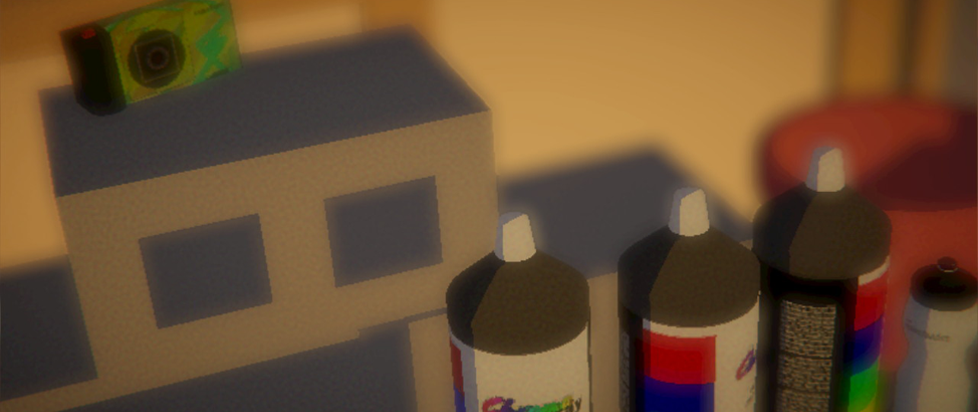
Urgency and Mastery in Umurangi Generation
Photography game Umurangi Generation feels a little rushed to start with. Not in its vibes – the first level finds you hanging out with your friends, asked to take pictures of graffiti, boom boxes and skateboards – but in the timer that ticks up for the first ten minutes.
Initially, this made me inclined to rush through the levels as I watched this clock tick up, but at the same time I could tell this impulse was counter to the way the game is intended to be. Regardless of the rest of the text of Umurangi Generation, it is a photography game: shouldn’t it ultimately want me to stop and take photos? While I followed advice to turn off the timer, I kept chewing on its presence. Was it at odds with the game’s purpose, or was I acting in conflict with it?
Once I was more familiar with Umurangi Generation, I revisited the bonus objectives; the goal to complete the level under 10 minutes doesn’t exist in isolation. All of the bonus goals have to be completed together, or they don’t count as completed at all – except in the context of payout, which only exists so far as money earned is, itself, a bonus goal. This cash payout goal requires you to take many photos, more than the bare minimum that completing the level requires, and more than the amount of film you start off with could accommodate.
Teeny tiny canisters dotted around each level restock your film, and it’s also a bonus goal to collect all of them, no matter where they might be hidden. Both the cash payout and the canister collection objectives require you to know the level design intimately – to know where the canisters are, and also when to pick them up in relation to subjects you’re photographing, as picking up new film before you’re running low will waste the excess.
On top of the bulk photography that those bonus objectives encourage, two other objectives are oriented around technical skill: one, to recreate a ‘postcard shot’ per level, and a second to take a group photo of all of your friends. The group photo is a composition challenge, as your pals inhabit different levels and spaces, and it’s not only about any lens you use but your relative position. Is there a vantage point in one corner, in crouching, at height? Conversely, the postcard challenge provides your exact position – but it’s up to you to identify exactly how the picture you’re replicating was taken. Can you eyeball the difference between a standard lens and a slightly zoomed in wide angle?
Then, of course, you have to complete all these goals in under ten minutes for them to count at all. More than optional add-ons to consider while going through the game, they essentially construct a challenge run, which requires you to master any particular level. On completing these bonus objectives, you’re rewarded specifically with more ways to use your camera.
If rushing to photograph your targets in under ten minutes made my early experience feel like a puzzle hunt, running around to identify objects and symbols without context, properly pursuing the bonus objectives required me to fully understand exactly what story each level was telling. There’s no way to miss the bloodied soldier smoking a cigarette when there’s a film canister under his seat, it’s impossible not to pore over every inch of graffiti and what it means when it makes for such a great subject, and each group shot of your friends is an unavoidable emotional barometer for the rest of the scene.
Initially I suspected the timed goal as being at odds with Umurangi Generation’s design goals, but in going back to accept these challenges, I not only examined the game in unflinching detail, but also unlocked lenses that made me want to take the hundreds more photos I’ve now stacked up. I probably never would have pursued it if that ten-minute timer being on at the beginning hadn’t initially chafed, but despite initial appearances, Umurangi Generation’s most urgent-feeling feature really does want me to stop and take more photos.
Ruth Cassidy is a writer and self-described velcro cyborg whose DMs are open for pictures of mountains & your cats. Direct them to twitter @velcrocyborg





